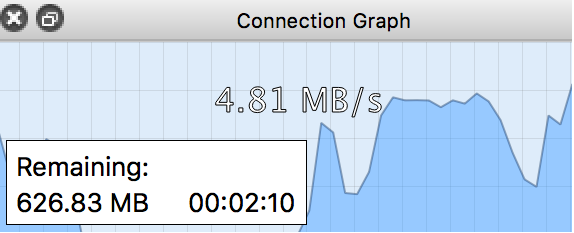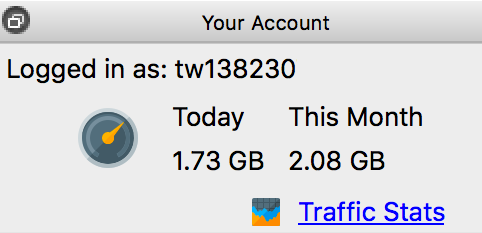Getting Started
Using the Browser
1 Home Screen and Basic Search
The first screen you will be presented with is our browser’s home screen. From the home screen, you can begin browsing the most recent posts to all newsgroups ("Latest File Groups" tab), the most highly rated posts (“Best File Groups” tab) or you can start a custom search in the top right of the browser window using the the Global Usenet Search box. This global Usenet search, will show results matching your search terms from all newsgroups and for all file types (Video, audio, documents). The global search will only search the binary newsgroups, text only group search is not available. Results from your searches are shown in new tabs in the main window, below the main icon bar. All new searches will open a new tab.

2 Downloading Files
Once you have found a post that you want to download, simply double click on the post. You will be presented with a dialogue box that allows you to comfirm and start the download or show detailed information on the post. You can see all of your active downloads by clicking the Transfers button (Cloud with a down arrow) up at the top; the number shown within the red square, is the number of current downloads that are queued and actively downloading.
To view the files after your downloads finish, simply click the "Download Folder" button, which will open your default download folder. On a Mac or Linux you can find the downloaded files within the UsenetWire folder that is inside the main Downloads folder, on Windows 7 at C:\Users\ [user]\Downloads\UsenetWire, and on Windows XP at C:\Documents and Settings\(user name)\Downloads\UsenetWire.
3 Finding Newsgroups to Browse
To find a new newsgroup to browse, click the "Newsgroups" button at the top, (it looks like a newspaper). This will show the list of newsgroups available from the the Usenet in the main window.
To sort newsgroups by name, click the "Newsgroup" bar. You can also sort by the number of articles available by clicking the "Articles" bar.
To search for a specific newsgroup by keyword, use the "Search for:" text field. Simply type a key word or topic and the list will automatically refresh with any matching newsgroup names. You can also filter results by newsgroup size using the "Show only newsgroups with at least:" and then setting a number of articles.
4 Working with Bookmarks
There are two default bookmark folders with a set of pre-chosen newsgroups already saved inside your bookmarks panel which is displayed on the left hand side of the browser window. The two default folders shown, are "Text" and "Binary", with the most popular newsgroups for the the two newsgroup types available, for you to begin using right away. You can easily add and delete newsgroups and folders to customize your bookmarks as you see fit.
To delete a newsgroup or folder from this list, simply right click on the item and select delete. Please note that if you delete a folder that currently contains newsgroups inside it, those newsgroup links will also be removed.
To add a folder, simply right click at the bottom of the bookmark list and select Add Folder. To add a specific newsgroup to your bookmarks, click on the Newsgroups button at the top (it looks like a newspaper), click on the (+) icon next to the name of the newsgroup in the newsgroup list you would like to add, then you will be prompted to choose the folder where you want to put it, simply select the folder and click “Ok”. You can also drag and drop a newsgroup into the bookmark bar from the main window.

5 Browsing Bookmarks
Once you have your favorite newsgroups saved in your bookmarks, you can begin browsing them. To view the most recent posts in a bookmarked newsgroup, simply click on the newsgroup's name and the main panel on the right will refresh with the and posts in that group. In the main panel, you can scroll and page through the posts. While browsing a binary group, you can sort the posts by file type: videos, audio, documents, ISO, software and images or you can simply choose to view them all (This is the default view).
6 Settings (Preferences on Mac)

Login
Here is where you will enter your username and password. If you have forgotten your password, you can get a new one by clicking the forgot password link.

Usenet Index
You can set file group default behavior for downloads, thumbnail settings, and turn on the text panel when browsing binary newsgroups in the index menu.
![]()
Search
You can choose between Usenet search engines and set search history options

General
You can control private data settings, file system settings, and several user interface settings from the General settings menu.

Connection
In the connection settings menu, you can set a download speed limit, choose a different connection port, choose a different connection type, change the number of connections used and turn on secure (SSL) connections as well as set the SSL port.

Downloads
Inside the Downloads settings, you can choose how subfolders are created as well as control how PAR2 and RAR files are handled.
![]()
Import
In the import settings, you can use the NZB Auto Import feature to automatically download files. It will monitor a specified folder for NZB files, and then import and remove them automatically after the download has completed.

Scheduler
You can set the time of the day you wish to download content. This can be customized for normal downloads, previews, and images.

Video
The video settings will allow you to link to the VLC video player of your choice. You can also set video preview settings from this menu.

Safe Search
Safe search can help you filter out adult content. Simply click the checkbox to enable it.
![]()
Text
Text settings is where the default sender’s information is set for all text newsgroup posts posted by you. You also can set the number of text newsgroup headers that are automatically loaded.
7 Jumpstart Your Usenet Experience
Many shortcuts are available to you in the interface simply by right clicking an item in the main window on the right. For instance, right clicking on any file group will bring up options and actions available specific to that group, like "Download", "Show details" or “Show Automatic Preview”. Right clicking on items being actively downloaded will give you instant access to canceling that download or changing its priority.
Previews and Automatic Previews are sometimes available for video file groups. If a preview is available for a video, the “Show Automatic Preview” option will be available to click on when you right click on an item in the list.
We recommend VLCPlayer for video playback. VLC Media Player is an open source, free media player that works best for viewing and using all types of video and audio content you find on the Usenet. It can be found here.
Usenet Browser User Guide
![]()
Home
The Home button will take you to our browser’s home screen. Our home screen shows two open tabs, the “Latest File Groups” and the “Best File Groups.” The “Best File Groups” tab shows you the highest rated file groups from other users and the “Latest File Groups” tab shows the most recent file groups that have been uploaded to the Usenet.
![]()
Overview
The Overview button will display the file groups available for download in any of the newsgroups you click on, in the bookmarks bar.
![]()
Search
Clicking on the Search button, will display tabs containing all the file group results from any custom searches you have run by typing keywords into the main search box in the top right of the application window.
![]()
My List
The My List button will display any file groups you have added to your list by right clicking on any file group and selecting “Add File Group To My List.”
![]()
Newsgroups
Clicking the Newsgroups button will display a list of newsgroups available for browsing on the Usenet. From this screen, you can search for newsgroups by keyword or article count. You can add newsgroups to your bookmarks bar by clicking on the (+) icon next to the name of the newsgroup you want to add.
![]()
Auto Search
The Auto Search button launches the Auto Search panel. From here, you can create custom Usenet searches that will run every hour while the browser is open and running. Custom searches can be configured to either display new file groups found based on your search criteria or download them. You can also set a cap on your total download bandwidth so that you don’t use all of your available bandwidth if you are on a metered Internet plan.
![]()
Open NZB
Clicking the Open NZB button will allow you to open and import any NZB file that you may have downloaded from third party NZB sources. After you open an NZB, it can easily be queued for download.
![]()
Download Folder
Clicking the Download Folder button, will open the folder where your downloads are stored, giving you easy access for fast playback and use.
![]()
Transfers
To display your list of currently active file group downloads, click on the Transfers button. From the Transfers screen, you can monitor the progress of each download, change the priority of each download or delete any unwanted downloads.
![]()
Pause
The Pause button will pause all of your currently queued downloads. Clicking the Pause button again will resume your downloads again.
![]()
Auto Shutdown
Clicking the Auto Shutdown button will trigger your computer to shutdown when all of your queued file groups finish downloading. Clicking this button once will active auto shutdown and clicking it again, will deactivate it.
Connection Graph
The Connection Graph shows your download speed and the amount of time and data left to completion for your currently queued transfers.

NNTP Activity
The NNTP Activity panel shows the current activity over each of the connections to our servers.

Messages
The Messages panel will show any service updates or software updates from UsenetWire.

Your Account
The Your Account panel shows how much data you have downloaded in the past month and the current day, as well as which account is logged in and active. You can also view additional traffic stats by clicking the “Traffic Stats” link.
